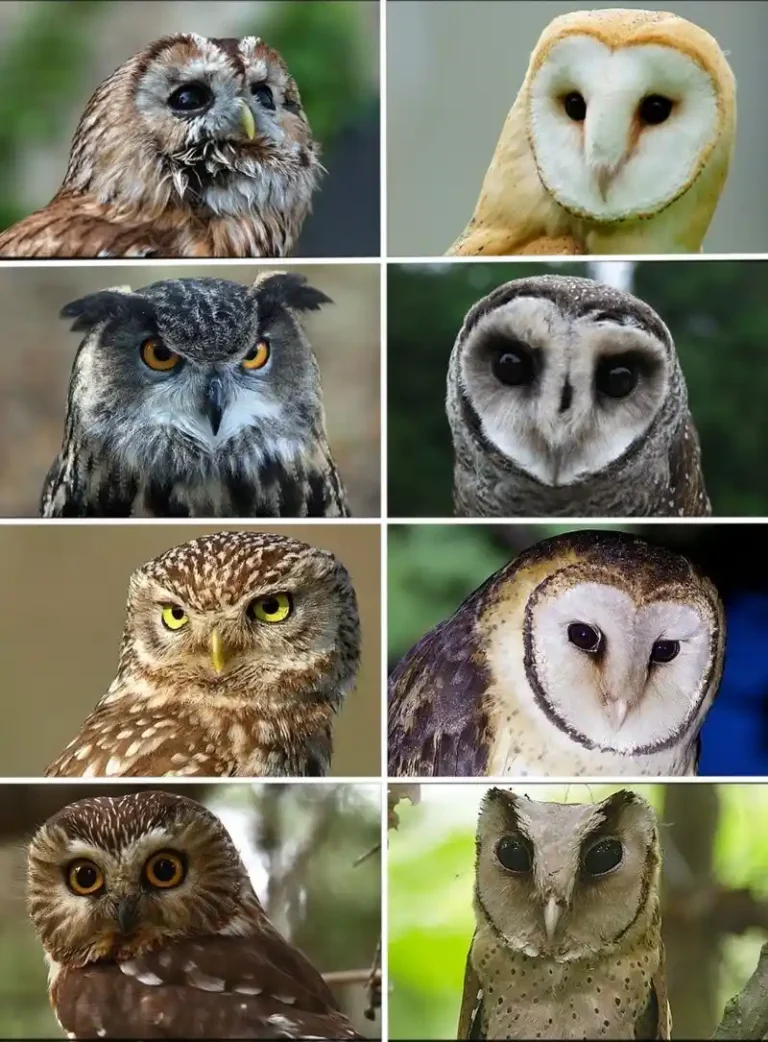Facts about fall, with its crisp air and vibrant colors, is more than just a picturesque season. It’s a time of profound scientific phenomena, historical significance, and cultural traditions.
From the intricate chemistry behind leaf color changes to the ancient harvest practices that shaped societies, this season influences everything from wildlife behavior to human activities.
Dive into these 100 fascinating facts about autumn and discover the remarkable ways this transitional period shapes our world.
Stay sharp and foster your brain’s health with our Trivia game generator or Fun Facts game for you mental exercises and mental sharpness!



1. The Fall Equinox Marks the Beginning of Autumn
- Details: The Fall Equinox occurs around September 22-23 in the Northern Hemisphere, marking the official start of autumn. It is the day when daylight and night are approximately equal in length.
2. Leaf Color Change Results from Pigment Breakdown
- Details: The red, yellow, and orange colors of autumn leaves are due to the breakdown of chlorophyll and the visibility of carotenoids (yellow and orange) and anthocyanins (red) in species such as maples (Acer spp.) and oaks (Quercus spp.).
3. Photosynthesis Slows as Trees Prepare for Winter
- Details: As daylight shortens and temperatures drop, chlorophyll production in deciduous trees like maples and birches (Betula spp.) decreases, slowing down photosynthesis and signaling the start of dormancy.
4. Deciduous Trees Lose Their Leaves to Conserve Water

- Details: Deciduous trees, including oaks and willows (Salix spp.), shed their leaves in autumn to reduce water loss and energy expenditure during the winter months when water is less accessible.
5. Harvest Season is Crucial for Agriculture
- Details: Autumn is the key season for harvesting crops such as wheat, corn (Zea mays), and apples (Malus domestica) that were planted in spring, ensuring food availability through winter.
6. The Term “Fall” Comes from the Falling Leaves
- Details: The term “fall” originated from the Old English word “feallan,” which means “to fall,” referencing the falling leaves of deciduous trees during this season.
7. Autumn Colors are More Intense in Cooler Climates
- Details: Cooler temperatures and sunny days enhance anthocyanin production in species like red maples (Acer rubrum), leading to more vivid red and purple leaf colors.
8. Migratory Birds Prepare for Long Journeys
- Details: Species such as monarch butterflies (Danaus plexippus) and Arctic terns (Sterna paradisaea) migrate to warmer climates in autumn to escape the colder temperatures of the Northern Hemisphere.
9. The Harvest Moon is the Full Moon Closest to the Autumn Equinox
- Details: The Harvest Moon occurs around the time of the autumn equinox and provides additional light during the evening hours, aiding farmers in the Northern Hemisphere with late-season harvesting.
10. Autumn is Associated with Harvest Festivals
- Details: Autumn harvest festivals include Thanksgiving in the United States and the Mid-Autumn Festival in China, celebrating the season’s agricultural abundance.
11. Frost Forms as Temperatures Drop
- Details: Frost forms when temperatures fall below 0°C (32°F) and dew on surfaces such as grass and leaves freezes, which can impact late-season crops and ornamental plants.
12. Seasonal Changes Can Influence Mood and Behavior

- Details: Reduced daylight in autumn can affect mood and behavior, contributing to Seasonal Affective Disorder (SAD), which is linked to changes in melatonin and serotonin levels.
13. Different Trees Exhibit Different Fall Colors
- Details: Species such as sugar maples (Acer saccharum) turn vibrant red, while oaks (Quercus spp.) display deep reds and browns, and birches (Betula spp.) show golden-yellow hues.
14. Autumn Contributes Organic Matter to Soil Health
- Details: Decaying leaves from species like oaks and maples add organic matter to the soil, enriching soil fertility and promoting healthy ecosystems.
15. The Autumnal Equinox Symbolizes Balance
- Details: The autumnal equinox, with its nearly equal length of day and night, symbolizes balance and has been associated with cultural practices and spiritual beliefs in various traditions.
16. Many Animals Begin to Store Food for Winter
- Details: Animals such as squirrels (Sciurus spp.) and bears (Ursidae family) prepare for winter by storing food or accumulating fat reserves during autumn.
17. The Chemistry of Leaf Color Change Involves Biochemical Reactions
- Details: The change in leaf color involves the breakdown of chlorophyll and the production of carotenoids and anthocyanins through biochemical processes.
18. Autumn Brings Shorter Days and Longer Nights
- Details: The tilt of the Earth causes daylight to decrease and nights to lengthen as the Northern Hemisphere moves into autumn, impacting daily light exposure and temperatures.
19. Historical Harvest Records Reflect Climate Changes
- Details: Historical records of harvests, such as those from medieval Europe, can provide insights into past climate conditions and environmental changes affecting agriculture.
20. Autumn Affects Plant Growth
- Details: As temperatures cool and daylight shortens, plant growth slows, and many plants enter dormancy to prepare for winter conditions.
21. Autumn is Linked to Increased Allergens
- Details: Increased levels of mold spores from decomposing leaves and ragweed (Ambrosia spp.) pollen in autumn can affect individuals with allergies and asthma.
22. Cultural Celebrations Reflect Autumn’s Bounty
- Details: Festivals such as Thanksgiving and the Mid-Autumn Festival highlight seasonal foods like pumpkins (Cucurbita spp.), apples (Malus domestica), and squashes (Cucurbita spp.).
23. The Biological Clock of Plants Adjusts Seasonally
- Details: Plants such as deciduous trees and perennials adjust their biological clocks with the changing seasons, slowing growth and entering dormancy in autumn.
24. Autumn Foliage Viewing is a Popular Activity
- Details: Regions like New England in the United States are famous for their autumn foliage, attracting tourists to view the vibrant colors of trees such as maples and oaks.
25. Autumn Influences Ocean Currents and Weather Patterns

- Details: Seasonal temperature changes can affect ocean currents and atmospheric conditions, influencing global weather patterns and climate.
26. The Scent of Autumn Comes from Decaying Leaves
- Details: The earthy aroma of autumn is largely due to the decomposition of fallen leaves, which releases organic compounds such as phenols and aldehydes.
27. Autumn Impacts Wildlife Behavior
- Details: Wildlife such as deer (Cervidae family) and foxes (Vulpes vulpes) adjust their behavior in autumn, including mating rituals and preparing for colder temperatures.
28. The Timing of Fall Varies by Hemisphere
- Details: In the Northern Hemisphere, autumn begins in September, while in the Southern Hemisphere, it starts in March, corresponding to the different seasonal cycles.
29. Autumn is a Key Season for Insect Activity
- Details: Insects like ladybugs (Coccinellidae family) become more active in autumn as they prepare for winter, often congregating in large numbers for warmth.
30. Autumn Changes Animal Fur Color
- Details: Many animals, such as the Arctic fox (Vulpes lagopus), change fur color in autumn to blend into the changing environment and prepare for winter.
31. The Fall of the Roman Empire is Associated with Autumn
- Details: The term “fall” in historical contexts, such as the fall of the Roman Empire, metaphorically refers to decline or collapse, linked to the season’s changes.
32. Autumn’s Cooling Temperatures Affect Crop Yields
- Details: Temperature drops in autumn can affect the maturation and quality of crops like grapes (Vitis vinifera) and pumpkins (Cucurbita spp.), influencing harvest yields.
33. The Celts Celebrated Samhain at the End of Harvest Season
- Details: Samhain, celebrated by ancient Celts around October 31-November 1, marked the end of the harvest season and the beginning of winter, influencing modern Halloween traditions.
34. The Equinox Has Historical Timekeeping Significance
- Details: Various ancient cultures, including the Egyptians and Mayans, used equinoxes to align structures and timekeeping practices with celestial events.
35. Autumn is Associated with Leaf Pile Play

- Details: Raking and jumping into piles of fallen leaves, a tradition in many cultures, is often associated with family activities and seasonal enjoyment.
36. Indian Summer Refers to Warm Weather in Fall
- Details: Indian summer describes a period of unseasonably warm weather occurring in late autumn, typically characterized by clear skies and mild temperatures.
37. Historical Harvest Records Reflect Past Climate Conditions
- Details: Records from historical harvests, such as those maintained in medieval Europe, offer insights into climate variations and their impact on agriculture.
38. Leaf Color Change Indicates Tree Health
- Details: The timing and intensity of leaf color changes in species such as red maples (Acer rubrum) can indicate the health of the tree and its response to environmental stressors.
39. Autumn Marks the End of the Growing Season
- Details: For many plants, including annuals like sunflowers (Helianthus annuus), autumn signifies the end of the growing season and the start of dormancy.
40. Autumn Has Cultural and Religious Symbolism
- Details: Autumn’s symbolism varies across cultures, representing themes such as harvest, preparation for winter, and reflection, as seen in festivals like Diwali and Thanksgiving.
41. The Autumn Leaf Drop is a Survival Strategy
- Details: Deciduous trees like ash (Fraxinus spp.) drop their leaves to minimize water loss and protect themselves from harsh winter conditions.
42. The Duration of Autumn Can Vary Based on Latitude
- Details: The length of autumn varies with latitude, with higher latitudes experiencing shorter autumn periods due to more rapid changes in daylight and temperature.
43. Autumn’s Temperature Drop Affects Pest Populations
- Details: Cooler autumn temperatures lead to a decrease in pest populations, such as mosquitoes (Culicidae family), which become less active as temperatures fall.
44. The Autumnal Equinox has Astronomical Significance

- Details: The equinox is a key astronomical event that marks the change of seasons and is used to calculate various celestial phenomena and calendar dates.
45. Autumnal Changes Affect Soil Temperature
- Details: Soil temperatures decrease in autumn, which affects plant growth and the activities of soil organisms, such as earthworms (Lumbricus terrestris).
46. Some Plants Exhibit Unique Autumn Adaptations
- Details: Plants like the American witch hazel (Hamamelis virginiana) flower in late autumn, adapting to the season with unique flowering and seed dispersal strategies.
47. The Scent of Autumn is Related to Soil Microbial Activity
- Details: The characteristic autumn smell is influenced by increased microbial activity in the soil as leaves decompose and release organic compounds.
48. Autumn is a Critical Time for Fire Safety
- Details: Dry conditions and fallen leaves increase the risk of wildfires in autumn, making fire safety practices crucial in forested and rural areas.
49. The Changing Season Affects Human Metabolism
- Details: Autumn’s cooler temperatures can influence human metabolism, with changes in dietary habits and increased calorie intake to prepare for winter.
50. The Peak of Fall Foliage Varies by Region
- Details: The timing of peak fall foliage differs by region, with northeastern North America experiencing peak colors in late September to early October, while regions like the southern Appalachians peak later.
51. Certain Insects Begin to Hibernate in Autumn
- Details: Insects such as certain species of ladybugs (Coccinellidae family) enter hibernation or diapause in autumn to survive the winter months.
52. Autumn Rainfall Can Influence Soil Erosion
- Details: Increased rainfall in autumn can lead to soil erosion, particularly in areas with heavy rainfall and exposed soil surfaces, affecting agriculture and natural landscapes.
53. Historical Autumn Festivals Reflect Agricultural Cycles

- Details: Festivals like Oktoberfest in Germany originated as harvest celebrations, reflecting the agricultural significance of autumn in historical and cultural contexts.
54. The Term “Indian Summer” Has Historical Roots
- Details: The term “Indian summer” is believed to originate from early European settlers’ descriptions of warm autumn weather, reflecting the impact of regional climate patterns.
55. Autumn Can Influence Animal Reproduction Cycles
- Details: Some animals, such as deer (Cervidae family), enter their breeding season in autumn, with increased mating behaviors and changes in reproductive cycles.
56. The Composition of Fall Leaves Affects Decomposition Rates
- Details: The decomposition rate of fallen leaves is influenced by their composition, with leaves from species like oaks decomposing more slowly due to higher lignin content.
57. The Fall of the Leaves is Part of the Tree’s Winter Preparation
- Details: Deciduous trees, such as birches (Betula spp.), shed their leaves in autumn as part of a preparation strategy to conserve resources and minimize damage during winter.
58. Autumn Affects the Availability of Seasonal Foods
- Details: Seasonal foods like pumpkins (Cucurbita spp.), apples (Malus domestica), and pears (Pyrus spp.) are harvested in autumn and are important for traditional diets and culinary practices.
59. The Autumn Season Influences Animal Migration Patterns
- Details: Autumn triggers migration patterns in species like the monarch butterfly (Danaus plexippus) and Arctic tern (Sterna paradisaea), as they move to warmer regions.
60. The Autumnal Equinox Has Been Celebrated in Various Cultures
- Details: Cultures such as the ancient Greeks and Native American tribes celebrated the autumnal equinox with festivals and rituals marking the changing seasons.
61. The Coolness of Autumn Affects Water Temperatures
- Details: As autumn progresses, water temperatures in lakes and rivers decrease, influencing aquatic life and affecting the behavior of species such as fish (e.g., trout).
62. Some Plants Use Autumn to Prepare for Winter Dormancy
- Details: Plants like perennials (e.g., coneflowers, Echinacea spp.) enter dormancy in autumn, reducing metabolic activity to survive winter conditions.
63. The Composition of Autumn Leaves Affects Their Color
- Details: The colors of autumn leaves are influenced by their chemical composition, including the presence of anthocyanins, carotenoids, and chlorophyll.
64. Autumn Brings Changes in Wildlife Feeding Behaviors
- Details: Animals such as squirrels (Sciurus spp.) increase food storage activities in autumn, caching nuts and seeds to prepare for winter.
65. The Timing of Autumn Events Can Predict Winter Severity
- Details: In some traditions, the timing of certain autumn events, like early frost or the behavior of animals, is used as an indicator of the severity of the upcoming winter.
66. Autumn is a Key Time for Observing Migratory Patterns
- Details: Bird species like the Canada goose (Branta canadensis) and the ruby-throated hummingbird (Archilochus colubris) are commonly observed during their autumn migrations.
67. The Autumn Season Affects Human Vitamin D Levels
- Details: Reduced sunlight exposure in autumn can lead to lower levels of vitamin D in humans, potentially impacting health and leading to an increased need for dietary sources or supplements.
68. The Fall of the Year Has Been Used in Various Calendars
- Details: Autumn is a significant period in many calendars, including the Gregorian and lunar calendars, affecting agricultural practices and cultural events.
69. Autumn’s Temperature Changes Affect Agricultural Pests
- Details: The cooling temperatures of autumn influence the life cycles and population dynamics of agricultural pests, such as aphids (Aphididae family) and beetles (Coleoptera order).
70. The Autumnal Equinox is Important for Astronomical Observations
- Details: The autumnal equinox is used by astronomers to calibrate celestial observations and track the positions of celestial objects due to its significance in the Earth’s orbit.
71. Certain Trees Have Unique Autumnal Characteristics
- Details: Trees like the sweetgum (Liquidambar styraciflua) exhibit star-shaped leaves that turn a range of colors, from yellow to red, providing unique autumnal aesthetics.
72. Autumn is a Key Time for Soil Moisture Changes
- Details: Soil moisture levels fluctuate in autumn due to variable rainfall and temperature changes, affecting plant growth and agricultural practices.
73. Historical Harvest Practices Reflect Seasonal Adaptations
- Details: Historical harvest practices, such as those documented in agricultural records from colonial America, reflect adaptations to seasonal changes and local climate conditions.
74. Autumnal Changes Affect Aquatic Ecosystems
- Details: Seasonal changes in autumn impact aquatic ecosystems by affecting water temperature, nutrient levels, and the behavior of aquatic organisms.
75. The Fall of Autumn Leaves Contributes to Natural Mulch
- Details: Fallen leaves create natural mulch on the forest floor, providing insulation, retaining soil moisture, and contributing to nutrient cycling.
76. Autumn’s Cooling Temperatures Influence Energy Consumption
- Details: As temperatures drop in autumn, energy consumption for heating increases, impacting energy use patterns and associated costs.
77. The Autumn Season Can Influence Consumer Behavior
- Details: Autumn influences consumer behavior, with increased purchases of seasonal items such as clothing, decorations, and foods like pumpkins and apples.
78. Historical Records Document Autumnal Weather Patterns
- Details: Historical weather records, such as those from weather stations or ship logs, provide insights into past autumnal weather patterns and climate variations.
79. The Autumn Leaf Drop Helps Prevent Snow Damage
- Details: The removal of leaves in autumn reduces the risk of snow accumulation on trees, which can cause branch breakage and damage.
80. Autumn is a Significant Time for Wildlife Observations
- Details: Autumn is a prime time for observing wildlife behaviors, such as mating displays, migration, and foraging, providing valuable data for ecologists and wildlife enthusiasts.
81. The Timing of Autumn’s First Frost Can Affect Crop Harvests
- Details: The timing of the first frost in autumn can determine the final harvest dates for crops such as sweet corn (Zea mays) and tomatoes (Solanum lycopersicum).
82. Autumnal Changes Affect Human Sleep Patterns
- Details: Reduced daylight and cooler temperatures in autumn can affect human sleep patterns, influencing circadian rhythms and sleep quality.
83. The Autumnal Equinox has Been Used for Agricultural Planning
- Details: Many agricultural societies have used the autumnal equinox to plan planting and harvesting schedules based on the changing length of daylight.
84. Autumn Influences the Life Cycles of Many Plants
- Details: Autumn triggers changes in the life cycles of plants, including seed dispersal, dormancy, and the cessation of growth in response to environmental cues.
85. The Fall of Leaves Contributes to Forest Ecology
- Details: The fall of leaves contributes to forest ecology by providing habitat for microorganisms and decomposers and contributing to the nutrient cycle.
86. Autumn’s Cooler Temperatures Affect Plant Pollination
- Details: Cooler temperatures in autumn can impact the activity of pollinators and the timing of pollination for late-blooming plants.
87. The Fall Season is Associated with Specific Bird Songs
- Details: In autumn, bird species such as the Eastern towhee (Pipilo erythrophthalmus) and the American robin (Turdus migratorius) exhibit specific vocalizations related to migration and territorial behaviors.
88. Autumn’s Changing Light Affects Plant Photosynthesis
- Details: Decreased daylight in autumn affects the photosynthetic activity of plants, reducing overall photosynthesis and preparing plants for winter dormancy.
89. The Autumnal Equinox Influences Celestial Events
- Details: The autumnal equinox is a key date for celestial events, such as meteor showers and planetary alignments, influencing astronomical observations.
90. The Seasonal Changes of Autumn Impact Ecosystem Dynamics
- Details: Autumn’s seasonal changes influence ecosystem dynamics, affecting interactions between species, resource availability, and habitat conditions.
91. The Chemistry of Autumn Leaves Involves Complex Reactions
- Details: The color changes in autumn leaves result from complex chemical reactions involving the breakdown of chlorophyll and the synthesis of anthocyanins and carotenoids.
92. The Fall Season Affects Wildlife foraging Behaviors
- Details: Wildlife foraging behaviors change in autumn as animals prepare for winter, with increased food gathering and storage activities observed.
93. Autumn’s Temperature Changes Impact Hydrological Cycles
- Details: Temperature changes in autumn affect hydrological cycles, including runoff patterns, water availability, and the recharge of groundwater sources.
94. The Autumn Leaf Drop Provides Essential Nutrients to the Soil
- Details: Decomposing leaves from trees such as maples and oaks provide essential nutrients to the soil, enriching it and supporting plant growth.
95. Autumn is a Time for Observing Seasonal Plant Changes
- Details: Autumn is an ideal time for observing seasonal plant changes, including leaf color changes, seed dispersal, and the preparation for winter dormancy.
96. The Historical Significance of Autumn Harvests Reflects Economic Practices
- Details: Historical records of autumn harvests provide insights into economic practices, agricultural techniques, and the impact of climate on food production.
97. Autumn’s Cooling Temperatures Influence Urban Ecosystems
- Details: Cooling temperatures in autumn impact urban ecosystems, affecting energy use, plant growth, and the behavior of urban wildlife.
98. The Autumnal Equinox Marks the Beginning of the Astronomical Autumn
- Details: The autumnal equinox marks the beginning of astronomical autumn, based on Earth’s orbit around the sun and the resulting seasonal changes.
99. Autumn Affects the Timing of Natural Phenomena
- Details: The timing of natural phenomena, such as the migration of birds and the blooming of certain plants, is influenced by the seasonal changes of autumn.
100. The Study of Autumn’s Impact on Ecosystems Provides Valuable Insights
- Details: Studying autumn’s impact on ecosystems provides valuable insights into seasonal changes, ecological interactions, and the effects of climate on natural processes.






